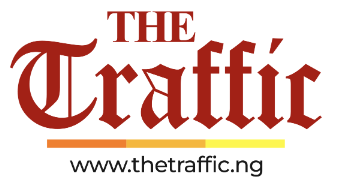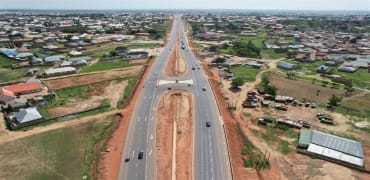THANKS TO THE REFORMS UNDER PRESIDENT BOLA TINUBU NIGERIA IS NO LONGER WHERE IT USED TO BE. 12 NUGGETS TO CHEW ON
THANKS TO THE REFORMS UNDER PRESIDENT BOLA TINUBU NIGERIA IS NO LONGER WHERE IT USED TO BE. 12 NUGGETS TO CHEW ON
MID 2023 : Nigeria’s economy was at a breaking point before May 2023. The country faced unsustainable fiscal practices, declining production, and rising poverty. Bold reforms were introduced to restore stability, and while the process is painful, it is already yielding measurable results. Looking at the key indices, the story becomes clear:
WHERE WE WERE. BEFORE:
WHERE We ARE NOW :
AND WHAT WOULD HAVE BEEN IF NO REFORMS HAD TAKEN PLACE.
1. Balance of Trade & Payments
BEFORE May 2023, Nigeria was consistently running a trade deficit, importing far more than it exported, with a negative balance of payment that drained the economy. TODAY the tide has shifted: through reforms, Nigeria now records a trade surplus, easing pressure on external accounts. Had reforms not been introduced, the deficit would only have deepened, leaving the economy in a state of worsening imbalance.
2. Exchange Rate
IN THE PAST , Nigeria operated multiple exchange rate windows, creating distortions and a wide gap between official and parallel markets. This system encouraged rent-seeking and capital flight. WITH REFORMS, the exchange rate has been unified, narrowing the gap and reducing uncertainty. Without this adjustment, the parallel market premium would have widened further, undermining economic credibility.
3. Foreign Exchange Reserves
BY EARLY 2023, unmet FX demand stood at $7 billion while net reserves had fallen below $4 billion, leaving Nigeria dangerously exposed. Reforms have since cleared FX forwards, rebuilt reserves to over $23 billion, and restored confidence by allowing FX access even on naira cards. Without such interventions, unmet demand would have surpassed $10 billion and reserves could have collapsed into negative territory.
4. Tax-to-GDP & Debt Service
Nigeria’s tax-to-GDP ratio was stuck below 10 percent, while 97 percent of government revenue was consumed by debt servicing — a near-bankruptcy situation. Today, reforms have lifted the tax-to-GDP ratio above 15 percent, while debt service has fallen below 50 percent of revenue. Without reforms, the ratio would have stayed below 10 percent, while debt service would have ballooned past 100 percent, leaving nothing for salaries or infrastructure.
5. Subsidy & Product Supply
Subsidies on fuel were not only wasteful but unsustainable, draining resources while still leaving Nigerians with fuel scarcity and negative FAAC inflows. With reforms, the subsidy has been eliminated, freeing funds for critical investments, while fuel supply is now guaranteed and states receive positive FAAC allocations. Without reforms, the subsidy system would have collapsed on its own, leaving citizens to suffer acute scarcity without relief.
6. Budget Deficit & Capital Spending
Previously, Nigeria’s budget was dominated by high deficits and low capital expenditure, with little room for investment in roads, schools, and hospitals. Reforms have reversed this trend: the deficit is now declining, while infrastructure spending is expanding. If reforms had not been carried out, the deficit would have ballooned further, and capital spending would have disappeared almost completely.
7. Ways & Means Financing
By May 2023, Ways and Means borrowing from the Central Bank had exceeded ₦30 trillion, undermining fiscal stability. The reform process has curtailed this practice, with a gradual draw-down and tighter fiscal discipline. Had nothing been done, overdrafts would have spiraled above ₦50 trillion, pushing Nigeria into a debt crisis of unprecedented proportions.
8. Oil & Gas Production
Nigeria’s oil and gas sector was in decline, with output falling steadily under theft, sabotage, and mismanagement. Reforms and renewed security have now lifted production, restoring Nigeria’s most important revenue stream. Without reforms, oil and gas production would have remained encumbered, starving the economy of foreign exchange and government of revenue.
9. Policy Environment
The pre-reform policy environment was inconsistent, opaque, and unfriendly to markets, scaring away investors. Reforms have since created a more predictable climate, encouraging capital inflows and even earning sovereign rating upgrades. Without reforms, policy uncertainty would have deepened, leaving Nigeria unattractive to both local and foreign investors.
10. Inflation & Interest Rates
Inflation was rising steeply before reforms, and interest rates were climbing in response, choking businesses. Today, while inflation remains high, it has started to moderate, and interest rates are stabilizing. Without reforms, Nigeria would have faced hyperinflation and punishingly high interest rates that would cripple industry and households alike.
11. Poverty & Jobs
Rising poverty and shrinking job opportunities defined Nigeria’s reality before reforms. Today, while poverty remains high, reforms are creating deliberate pathways to reverse this trend — from infrastructure investments to policies that open up opportunities for decent work. Without reforms, poverty would have deepened further, and more Nigerians would have lost their livelihoods.
12. Public Financial Management
Nigeria’s fiscal management was weak, uncoordinated, and riddled with inefficiencies. Reforms have strengthened coordination, improved transparency, and made public financial management more disciplined. Without reforms, inefficiency would have persisted, pushing Nigeria toward fiscal collapse and undermining all prospects for growth.


















